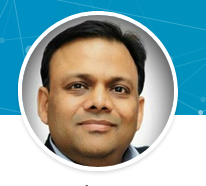Introduction
Yesterday, I got an opportunity to attend a webinar titles, Digital Identity – Foundation for a New Economy. I was super excited about this webinar since my area of interest is decentralised identity. I found the webinar very insightful and thought that it would be good if I can summarize the session in a blog post so that others (who could not attend) can get benefit of it.
Panellist
| Host | Panellist 1 | Panellist 2 | Panellist 3 | Panellist 4 |
|---|---|---|---|---|
 |
 |
 |
 |
 |
| Gary Schneider | Arvind Gupta | Keit Pentus-Rosimannus | David Birch | Johan Schmalholz |
| Managing Director at Citi | Data & Digital Economy, Platform Policy, New Media & Startups. DigitalIndia, WEF, OECD | Estonian MP; focus on Climate/New Technologies/Cyber | Author, board-level advisor and commentator on digital financial services | Advisor Payment Infrastructure / Senior Economist at Riksbank in Sweden |
Abstract
The webinar started with short presentations given by Arvind, Keit and Johan on the implementation of digital identity in their respective countries. Once the presentations were over, David pitched in and gave his point of view on digital identity, the way he sees things (his thoughts are also mentioned in his book, “Identity is the new money”, do take a read). Finally, few questions were asked to panellists about their implementations of digital identity and the problems they faced.
Notes from presentations
Arvind’s
Arvind explained what is Addhar (Hindi word for “foundation”) system and how it solves the problem of “multiple identification cards”, “paper-based KYC”, “duplicate and fake beneficiaries”, “insufficient service delivery”. He also said Addhar, being one identification for 99% of the Indian population, is used in the centre of every business out there in the country, be it telecom, finance, health, education or food.
One point which he mentioned, worth taking note, was:
One global standard for identity might not be the right (or easy) way forward since every country has different requirement and infrastructure. The standard will change based on a specific situation.
Keit’s
Keit talked about the ownership of identity being given to the end-user rather than any authority. She said, authorities can help to protect the identity data by keeping it safe but can not use it somewhere else without the consent of the owner of identity. This thought process was completely different than what we saw in case of Addhar system which is solely owned by the Indian government. She also mentioned two reasons for this thought process, one is, it will be too expensive to hold and control so much of data in one place and the other, it will be too risky to hold that since that data centre can become a honey pot of hackers.
Keit further added that how blockchain-based identity system is being used in Estonia for around more than 8 years now which is being used for various purposes from tax declaration to even logging an FIR.
All individual should own their identity
Johan’s
Johan began his talk by agreeing with Keit, digital identity can not be held and controlled by one authority. He said people in Sweden trusts too much on government and hence it is government’s responsibility to keep that trust safe. He mentioned how digital identity is being used in Sweden since 1949 and people are so used to it. Further, he also mentioned about BankId which is the leading digital ID scheme in Sweden, used by 80% of the population.
Later on, he said that government is also concerned about the monopoly with BankId because they feel that one dominating id is a bad solution.
Digital identity can not be owned by one company or government.
Notes from David’s talk
David started making his point by saying that these all solutions share the similar goals like “reducing the cost of financial intermediation”, “making citizen more secure”, “providing a platform for product and services” and they all succeed to some extent. But the difference is, we want,
to move away from the idea that people have an identity which can be tracked and traced and monitored all time.
The idea that you have a handful of digital identities like the way you have multiple credit cards, is quite appealing. For example, if I go to the bank, I get different identity called, let’s say, bank identity which may be based on govt identity.
He also talked about three pillars we need to support transaction in healthy society identity, money, and digital diligance.
Way forward, we need to look at more framework oriented aproaches like trust framework and cryptography can be used to build those frameworks, he added.
In the end, he asked one thought-provoking question:
If I have a digital identity, how do you check/verify (of course I don’t want the only govt people who can validate my digital identity as I don’t do business with the ONLY govt.) the identity?
Final words…
First of all, I would like to thank Gary for inviting me in this very insightful conversation. This whole writeup is based on my understanding and there might be flaws into this. So please reach out to me if you feel I have misinterpreted something, I will correct them down. In the end, I would like to mention about a project, which currently I am involved in, called Hypersign, which is going to be a decentralise identity infrastructure on AEternity blockchain. You can read more about Hypersign here. We have also released the first version of the POC which is implementation of Self Sovereign Identity with W3C did specification.
I would also like to thank you too for giving your time to read this blog. Happy learning!
